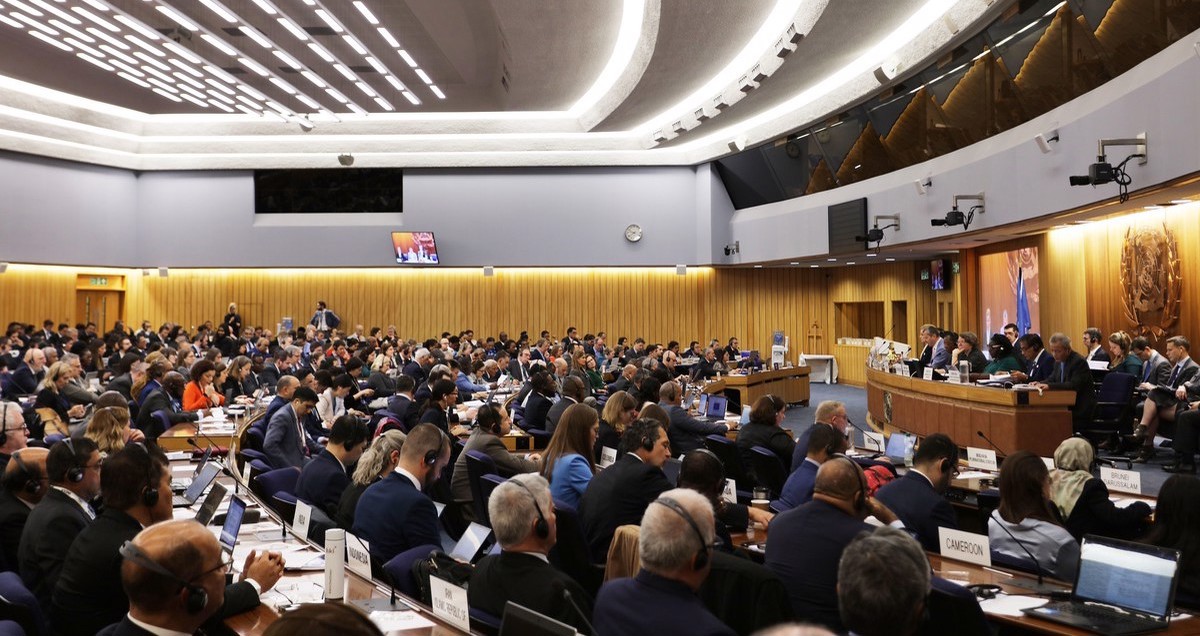MEPC 83: Could a universal GHG levy sit out this time?
A lack of global consensus and concerns regarding overlapping policy design could leave the universal levy on the sidelines at MEPC 83.
 PHOTO: IMO member state delegates at the MEPC meeting in London. IMO
PHOTO: IMO member state delegates at the MEPC meeting in London. IMO
The proposed universal GHG levy forms the backbone of the IMO’s economic mid-term measure.
But despite broad support, deep divisions remain. Countries were still split 'on the question of whether the mid-term measures should include a flat levy on all emissions' as the IMO’s GHG working group concluded on 31 March and 1 April, according to the Mærsk Mc-Kinney Møller Center for Zero Carbon Shipping (MMMCZCS).
Around 60 ratifying member states support some form of universal levy.
But the proposed price range is widely divided, from $18.75/mt to $150/mt of CO2-equivalent (mtCO2e).
Developing and island nations support the highest end of the range, while the International Chamber of Shipping and Bahamas support the lowest level.
The EU and Japan have proposed a middle ground at $100/mtCO2e.
Some member states favour starting low with gradual increases. Others, including the global oil lobby – China, Brazil, Saudi Arabia and South Africa among them – oppose the levy entirely.
Disagreements also persist on related elements such as feebates, flexibility mechanisms and revenue distribution, making this one of the most contentious components of the mid-term package.
Much of the shipping sector also supports a carbon pricing mechanism.
“The biggest issue we have today for green fuels is the price. Fossil fuels are too cheap, green fuels are too expensive,” CMB.Tech chief executive, Alexander Saverys said. "So, we need to bridge the gap. There are two ways to do it. You have to tax fossil fuels. And of course, green fuels need to become less expensive thanks to the technologies and efficiency of new technologies.”
Fortescue, a first mover in ammonia bunkering, supports a $100/mtCO2e level.
Concerns over overlapping measures
A technical measure in the form of a global fuel standard is also central to MEPC 83. The proposed standard would require vessels to meet annual GHG intensity limits based on energy use. These limits could be calculated using either a well-to-wake or an adjusted tank-to-wake approach. Suggested reduction targets range from 5.8%-24.5% by 2030, and 65-%78.5% by 2040.
Sanne Henriksen, head of IMO and EU public and regulatory affairs at A.P. Moller-Maersk has reportedly called to price carbon emissions “no less than” $600/mtCO2e, according to one media outlet. “The $600/mtCO2e figure could come from a $100 carbon levy and a $500 penalty price under a global fuel standard, or a different mix,” the report said, citing her.
That $500/mtCO2e penalty could be implemented under the GFS through the purchase of remedial units (RUs). Non-compliant vessels would either buy these credits from overperforming ships or the IMO’s reserve pool, or else pay a surcharge.
MMMCZCS recommends RU pricing at $450/mtCO2e under a well-to-wake scenario or $550/mtCO2e under a tank-to-wake calculation.
However, the incorporation of this economic element into a technical standard has raised concerns over potential double-charging, Sinem Ogis, Head of Maritime Policy and Legal Affairs at Siglar Carbon said.
“The core difference is that the technical measure addresses GHG intensity of the fuel used, while the economic measure targets absolute emissions,” Ogis noted.
If both measures are approved, member states would still need to resolve key technical details by October to avoid delaying adoption. “If only the technical measure advances, there is potential for regional actions,” Ogis added.
By Konica Bhatt
Please get in touch with comments or additional info to news@engine.online






